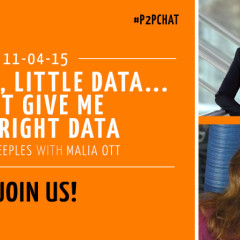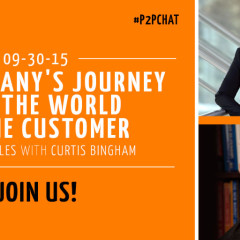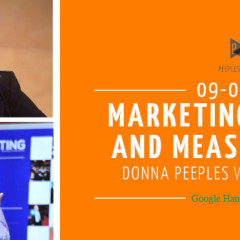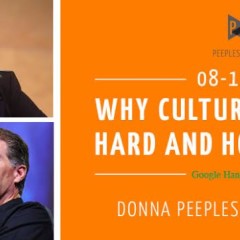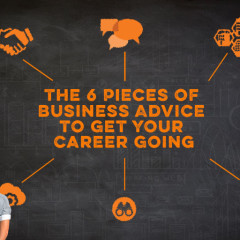Employee Experience: The Forgotten Element of CX Google Hangout

About my guests:
Dr. Welyne Thomas is a Behaviorist and Principal of Integrated Performance Consulting. She has overseen and executed every aspect of talent management including talent strategy, program and process development, and individual assessment for such companies as Delta Airlines, AIG and Georgia Pacific. The cornerstone of this work is the use of competencies and/or job-content analysis to plan and institute selection and development programs for all levels of management.
Michele Dock has been a practitioner of individual and organizational performance for over 30 years. She founded Integrated Performance Consulting (IPC) with the commitment to create productive, successful businesses by helping them value and attend to people and the business context equally.
Big Data, Little Data… Just Give Me the Right Data Google Hangout

Malia Ott works in strategic development for Clarabridge, the industry-leading intelligent Customer Experience Management (CEM) solution selected by more Global 1000 companies than any other solution.
National CX Day

October 6th marks the third anniversary of Customer Experience Day, a global recognition of the companies and individuals that create great experiences!
As a Customer Experience practitioner and all around customer enthusiast today means I get to celebrate all the hard work of individuals and teams across the globe that strive every day to focus on the customer.
70% of the Global Fortune 500 Company’s experienced excessive employee turnover between 2002-2012 (Forrester®), yet 80% of CEOs believe they deliver a superior Customer Experience, but only 8% of their customers agree. These days it’s no longer Word of Mouth, but World of Mouth. Thanks to Facebook and Twitter, Customers are more vocal than ever about their experiences and are 54% more likely to share a negative experience about a company over a positive one.
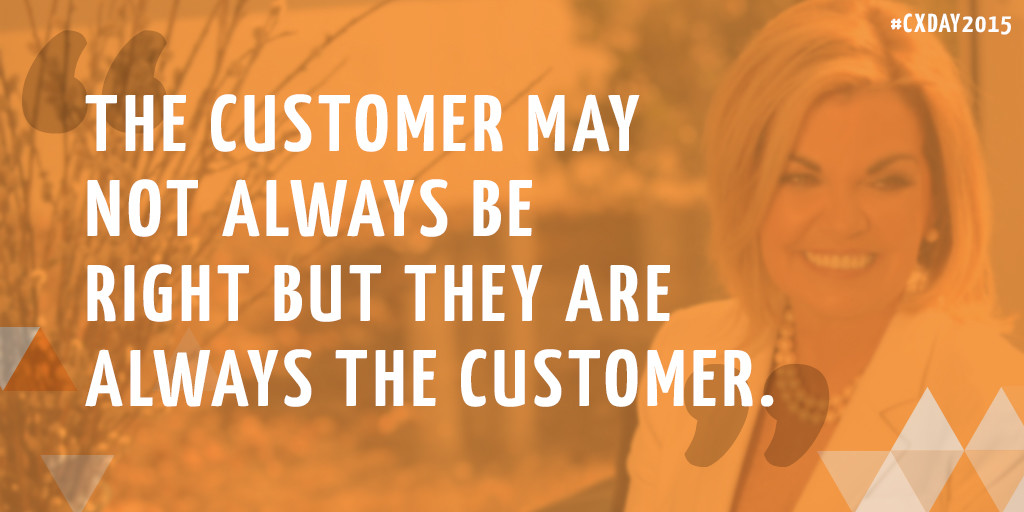
It is now more important than ever for companies to begin to focus on the proper development of a Chief Customer Officer role within their organization. I always say that one of the biggest challenges for a company just starting out on their Customer Experience journey is rallying their team behind the position. Yes, the customer should have a large portion of a company’s focus, but unless your employees are behind you in making this change, you’ll never get progress off the ground – it’s Customers First, Employees Always.
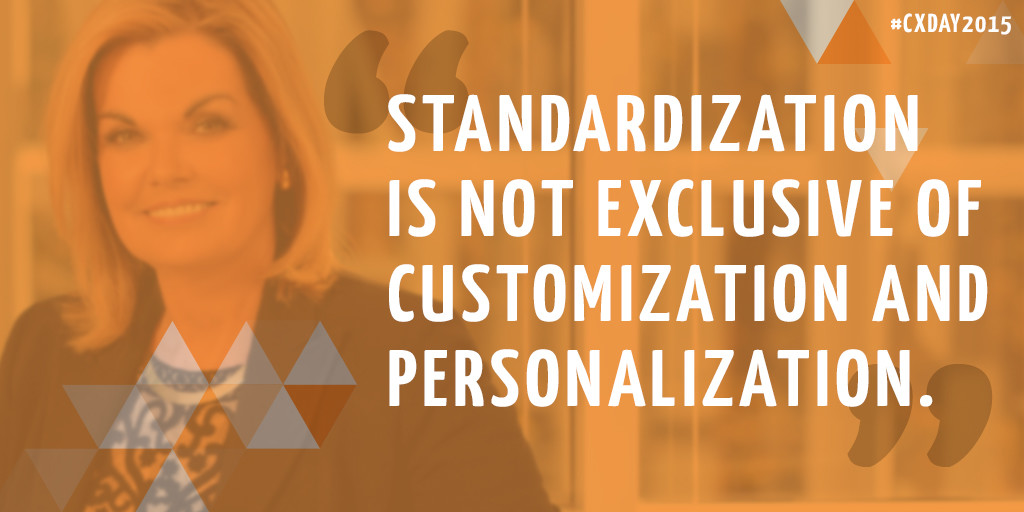
So to all the individuals out there charged with standing up for the Customer and delivering them one hell of an experience on behalf of your company, Customer Experience Day is for you! I’m your biggest fan and applaud you for a job well done!
The Company’s Journey into the World of the Customer Google Hangout With Featured Guest Curtis Bingham

About my guest:
Curtis Bingham is is the Founder & CEO of the Chief Customer Officer Council™, the first peer-led advisory group for CCOs, and CEO of Predictive Consulting Group, Inc. Through his work with Council members and more than 200 Chief Customer Officers, Curtis has identified and codified best practices in customer centricity, customer engagement, employee engagement, customer innovation, and more!
Take notice: Life-changing Customer Experiences provided by technology

For most people a Customer Experience means receiving a drink when you walk into a store or purchasing from a website that offers free shipping with no minimum spend required. As consumers, we’ve begun to note these “experiences” as normal in this day and age of brands vying for our loyalty. What companies are beginning to realize though, are that these types of moments are only experiential for certain consumers and often leave those with disabilities left unattended to. Well now, some of our favorite brands and household names are taking the word “experience” to a much deeper level, one that changes lives.
Creating a truly experiential moment.
Dimitri Hadjichristou, an independent product designer, created a tabletop device that turns music into a visual and tactile event for hearing-impaired children. The project was initially about exploring alternative ways in which we can experience music. However, during his research he learned that no two hearing-impaired individuals perceive sound the same way.
Accordingly, the groundbreaking technology called Vi was formed. Since it came to fruition, it garnered much attention among hearing-impaired children.
With Vi, Hadjichristou set himself apart from other brands and companies that have been unable to deliver such life-altering Customer Experiences by giving a specific demographic of consumers a first chance to experience music.
The Look at Me Project
The Look at Me app, developed by Samsung, aims to improve an autistic child’s ability to make eye contact, which is something that autistic children struggle with greatly. The app keeps children motivated and highly concentrated by using the camera function of digital devices that often appeal to children’s interests, along with incentives requiring interaction with parents to keep them engaged.
The Look at Me app not only delivers milestone moments to families, but it also delivers a phenomenal Customer Experience for both the children and parents and or caregivers.
Halo
Starkey Hearing Technologies produced a hearing aid that connects with smart phones and tablets using an application called TruLink Hearing Control. The hearing aid with this capability is called Halo and is meant for people with mild to severe hearing loss.
TruLink allows users to control their hearing aids with their smart phone or tablet device. They can adjust the direction of the sound they need to hear, turn the volume up or down, take phone calls, listen to music and hear life to the fullest.
Tongue Magnet
Atlanta’s very own Maysam Ghovanloo, an associate professor of electronic design and applications and bioengineering at the Georgia Institute of Technology, is enabling people with high-level spinal cord injuries to control their computers, wheelchairs and phones with their tongues.
Ghovanloo found that people with spinal cord injuries are able to use their tongues, a body part that does not tire easily. Using a magnet that is placed on the tongue with a piercing or glued temporarily, users move their tongues in certain ways or to different parts of their mouths to complete a simple task, such as “move the computer mouse to the right” or “drive my wheelchair forward.”
Even as wearable technology for those with disabilities is on the rise, wearables for safety are increasing in the marketplace as well.
Kingii
Developed by Tom Agapiades after a personal loss, the Kingjii is a fairly new gadget that will rocket a struggling swimmer above water, courtesy of a CO2-filled balloon. It weighs 4.9 ounces, that is equivalent to a smartphone or a deck of cards, and is strong enough to pull a 275 pound person to safety. The CO2 canisters that inflate the balloon are also refillable, making the Kingii reusable.
The application for kids seems the most obvious, but even experienced swimmers and surfers can get knocked around by the waves and it’s often confusing to know which way is up when you’re underwater.
While these companies are the beginning of a massive shift toward the betterment of society, not all brands have to be, should be or can be this connected to the consumer. However, brands have to find ways to be more relevant, and the best way to be relevant is by adding considerable value to the lives of customers.
It’s inspiring to see such initiative being taken by these brands to use the technology they have made so readily available to the masses, and find ways to make it beneficial to others who may not be able to fully utilize a cell phone or a tablet due to a disability.
Marketing Measures, Metrics & Modeling: Things that Count!, with special guest Guy Powell

About my guest:
Guy Powell is currently the President and Founder of ProRelevant, a company specializing in delivering critical advanced analytics software and consulting. He has also authored many books on this topic, including Marketing Calculator: Measuring and managing your return on marketing investment and ROI of Social Media: How to improve the return on your social marketing investments.
Why Culture Change is Hard and How To Do It with Paul Zak

View the Google August 12th Google Hangout below!
About my guest:
Paul J. Zak is a scientist, prolific author, and public speaker. His book The Moral Molecule: The Source of Love and Prosperity was published in 2012 and was a finalist for the Wellcome Trust Book Prize. He is the founding Director of the Center for Neuroeconomics Studies and Professor of Economics, Psychology and Management at Claremont Graduate University. Dr. Zak also serves as Professor of Neurology at Loma Linda University Medical Center.
Rendering Reality – Molding Virtual Reality into the Customer Experience

If the words immersive multimedia or Virtual Reality (VR) sound familiar to you, that is using technology to create a three-dimensional computer-generated world that a user can interact with and explore, then you’ve most likely heard its reference in the gaming industry. However, it goes well beyond virtual racing and fighting scenarios. Other industries have found new and innovative ways to use this groundbreaking technology to further improve the Customer Experience.
Virtual reality may seem new to the average Joe, but the concept has been around since the mid ‘50s. Morton Heilig, a cinematographer, wanted to find a way to engage his audience by catering to the senses, other than sight and sound.
He developed the Senorama, which is similar to a 3D arcade game, where a player’s smell and touch senses are engaged. It’s this concept that has industries today racing to come up with bigger and better ways to use Virtual Reality.
Technological advances continued over the decades bringing us visual flight simulation, in-visor LCD screens, data gloves and inertia sensors. But the reality is, that was only the beginning!
It’s Like You’re There.
Recently, Ford Motor Company has started using the Oculus Rift headsets in their Immersion lab, allowing customers to experience their new car models without a prototype being developed, which is often costly.
These headsets allow customers to look around the interior of the car and simulate driving experiences they may have while sitting in their car.
The architecture industry is also testing out cost saving methods with their virtual reality. Designers can now virtually display what a space will look like to a client.
For instance, rather than just looking at a computer screen image of a model, clients will be able to experience the space as if it were already built, allowing clients to make changes and improvements as they walk around, virtually of course.
H& R Block began using this technology when they decided to make changes to their offices around the country. Current customers will be able to use Rift headsets and experience what the new space would look and feel like.
Not only will they experience the look of the office, but also how the new processing order will be dealt with, providing feedback when necessary. With this research, Block was able to discover exactly what their customers wanted to experience when they walked into their office doors.
A Healthy Dose of Virtual Reality
The health care industry has always been known for innovation and cutting edge technology, so it’s no surprise they found a new way to use Virtual Reality technology.
The development of compatible software for the Rift headsets has helped individuals who have suffered from a stroke learn how to walk again. Products, like Gloveone, help patients to perceive depth, an important step in learning to walk, through a series of vibrations.
However, Virtual Reality doesn’t stop at the customer. Employee Engagement is another driving force companies are focusing on, specifically employee training.
The health care industry has begun training surgeons with this new technology before they hit the operating table. Doctors and nurses are able to learn at a higher level of recognition with the help of virtual reality, as it transports you into a real-life surgery.
Looking Down the Road, Virtually
Imagine a safer world, where employees feel more confident in training because they can experience situations through another level of comprehension. This would translate into happier, safer employees moving to an overall better customer experience.
We are just now touching the surface with Virtual Reality and the future of Customer Experience and Employee Engagement will forever change because of this technology, opening new doors to better customer experience and opportunities.
The 6 Pieces of Business Advice To Get Your Career Going
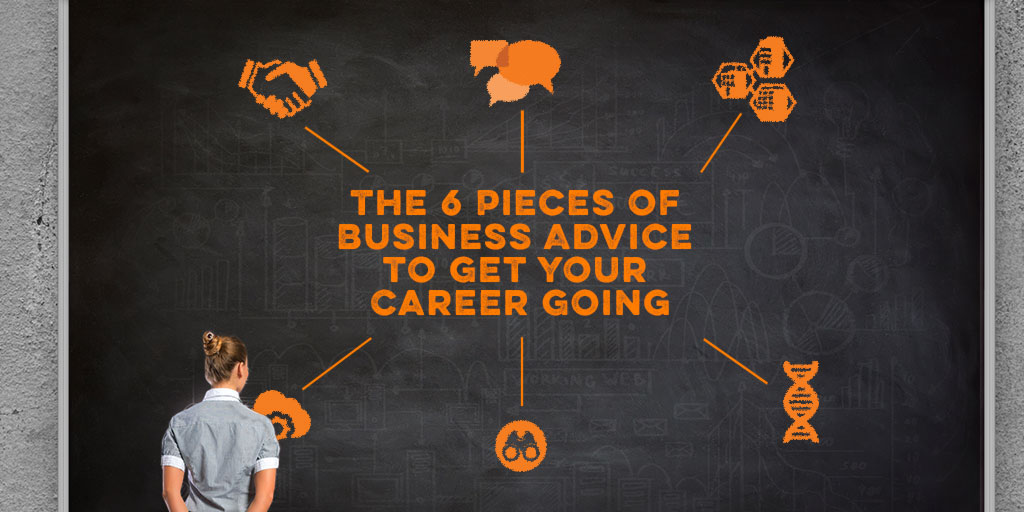
Corporate America is so much more than numbers, revenue, profits and earnings. When you get down to the nitty-gritty of it, there are underlying principles (protocols and pecking orders) that must be navigated, but you won’t find it discussed in any college lecture hall or part of any new employee orientation program.
So, when I was recently asked to write a letter of advice to my niece who recently graduated with honors (Go Katie!) from high school, it left me reflecting on guidance I never received as I entered the working world, but wished that I had.
Today, I want to share with you some points from that letter, which I believe you’ll find helpful, or at least interesting. It’s intended for those who are currently in the corporate world, have or know kids making their way into this often cold cruel world or anyone who has questions about building a successful career.
- Connect: Introduce yourself, shake hands and network. Every time you meet someone, there is always the potential to build a productive working relationship. The old adage is still true – It’s more about who you know than what you know.
Many companies may have the added benefit of Employee Resource Groups available; ERG’s are groups of employees who join together in their workplace based on shared characteristics, life experiences, interests or causes. Having a shared interest with a group of people will help you to become acquainted with other employee’s in a networking environment. Remember: There’s strength in numbers, especially numbers with a common purpose.
These days, networking is key and it’s easier than ever thanks to our social connections on sites like LinkedIn and Twitter. Here you can build your own personal brand as you work to expand your network. Remember, your network is your net worth!
Every trade or industry has large organizations that offer networking events for you to take advantage of. Community, volunteer groups and alumni organizations are also great resources, especially if you’re moving to a new city right out of college.
It’s also important that you know how to properly give a handshake. Research has been able to show that there is a direct correlation between the type of handshake given and the first impression made based off the handshake. Essentially, your handshake reflects personality characteristics.
The proof is in the pudding.
For example, William F. Caplin, a psychologist at the University of Alabama, did a study on the dynamics of a handshake and found that through the seemingly simple act, people can learn whether or not you are “shy” or “open,” and whether you are “anxious” or “outgoing.”
- Appreciate differences and focus on similarities: Through gathering diverse opinions, you always get to the best answers. It is rare that the right solutions are always found inside our own head. By understanding and exploring a variety of approaches and perspectives we expand our own thinking and enhance outcomes.
In the workplace there are two kinds of diversity: inherent and acquired. Inherent diversity involves traits one is born with, gender, ethnicity and sexual orientation, where as acquired diversity is based on traits garnered from experiences and environment, such as working in another country. For a company to exhibit what is referred to as two-dimensional diversity the leaders must exhibit at least three inherent and three acquired diversity traits.
Two-dimensional diversity unlocks innovation by creating an environment where “outside the box” ideas are heard. When minorities form a critical mass and leaders value differences, all employees can find senior people to go to bat for compelling ideas and can persuade those in charge of budgets to deploy resources to develop those ideas. (Harvard Business Review)
- Your first job won’t be your last: You’ll do many things and have many jobs in your career. Remember, though, it’s not about finding the job of a lifetime, but a lifetime of jobs. Learn and grow from each experience.
Knowledge is portable — you can take it with you! The skills you acquire at your first job can help you land your second and you can keep building from there. The information you soak up and retain will work to serve you better as you work towards a promotion at your job or a fresh start at a new company.
Over time, the business model has progressed from a standardized “T” form, a deep and intense knowledge on a very specific discipline, to that of Pi (Π). With the Pi formation, you have advanced knowledge on more than one area, such as marketing and call centers. This deep but much broader knowledge stands to make you more valuable to a company. It helps to identify and close organizational gaps in processes and technology among others. It helps to ensure a more holistic view and avoid the siloed thinking so prevalent in corporate organizations.
Also, realize, the days of working for a company for 20+ years has contracted into an average tenure of five years. This means you must be prepared to move on to learn a new part of business, or maybe a completely different industry. As you make changes, focus on adapting and learning quickly with the understanding that you are increasing your value as you go. Even the opportunity for a lateral role change within your company is the opportunity to increase your knowledge and understanding of a new function. Say making the move from Director of Sales, to Director of Operations, while the title and pay remain the same, you’re developing a new focus and continuing to make yourself valuable to the company.
- Don’t just lean in, leap in: Raise your hand, take risks, and remember there is no such thing as a stupid question. Without the risk, you’ll never see the reward. Do you want to grow in the company faster? Raise your hand and volunteer to take on more responsibility and leadership.
Don’t be afraid, dive in to learn the essentials about the business. Read the annual report, listen to the analyst calls, attend employee meetings and ask thoughtful questions of the senior level presenters, watch your company’s stock and add the company (and its competitors) to your google alerts. This will only serve to make you more valuable and your understanding of how all aspects of business are connected will begin to grow and pay dividends. It’s this knowledge that will give you the perspective to add value and move about the company if you so choose.
- Travel: The world is shrinking, but often understanding is lacking. Appreciate the rich diversity of this planet. Understanding the perspectives of others and the impacts of actions always gets you to the best answer. (see #2)
Be a student of the larger world, cultures, language, geographies, politics, economies – think about a world where the only boundaries are the ones you create in your own head. Find a company that will allow you the opportunity to gain experience through travel. Often it is the entry-level position that travels the most. Enjoy this opportunity while you have the freedom.
- Mentors and Sponsors – Get one, be one: When you’re starting out your career, it is important to find someone that can guide you to better understand the industry that you’re in, help you grow into your company role and navigate the organization. Create mentor and sponsorship opportunities, never forgetting to be one to someone else when given an opportunity. Mentors advise, sponsors act.
A mentor can answer the questions you don’t know the answers to yet and lead you in the right direction towards career success. Additionally, the best way to learn is through teaching others. To be mentored and then become a mentor will only enhance your workability and make you a more valuable team member. Knowledge is only powerful if it’s shared.
A sponsor is more vested than a mentor. They represent “your brand” when you aren’t there. They advocate, promote and connect you to others as opportunities arise using some of their hard-earned capital in the process.
These six points drive home the overall themes of communication, awareness transparency and inclusion — all things needed in the current state of business to keep a company thriving and keep yourself on the success track.
Have a plan. Know what to look for in a company before you commit to becoming an employee and knowing how you want to grow within a company will lead to many successes in your long career. I believe these points above can act as a road map to enhancing an existing career or as a gateway to those just starting their journey.
I now want to put this out to all of you!
What was the best advice you received, or maybe something you wish you would have known, when you started on your career path?
Peeples2People Episode 1: JC Quintana
Peeples2People Episode 1: JC Quintana
Join Motivated Founder & Chief Engagement Officer Donna Peeples for the inaugural video in her Peeples2People series. She’ll talk with CRM expert and the author of Speaking Frankly About Customer Relationship Management, JC Quintana.
Donna and JC will discuss the status of CRM, the similarities between personal and business relationships and the unified customer strategy, among other topics.

